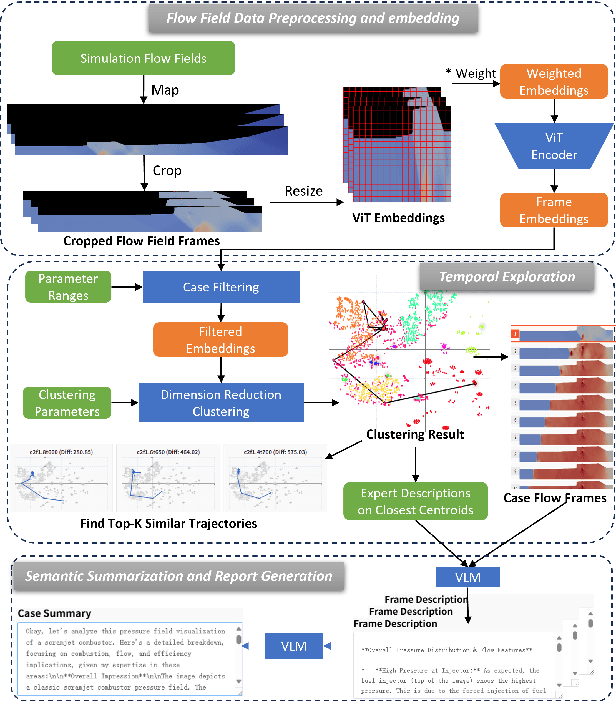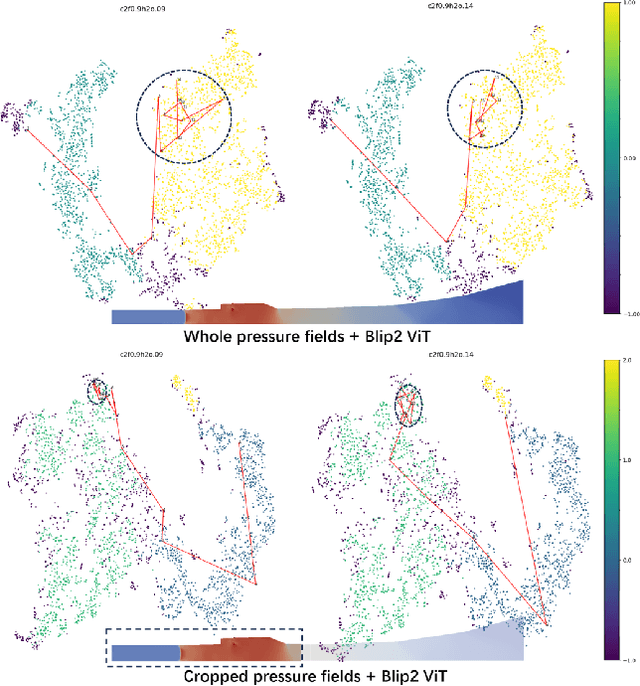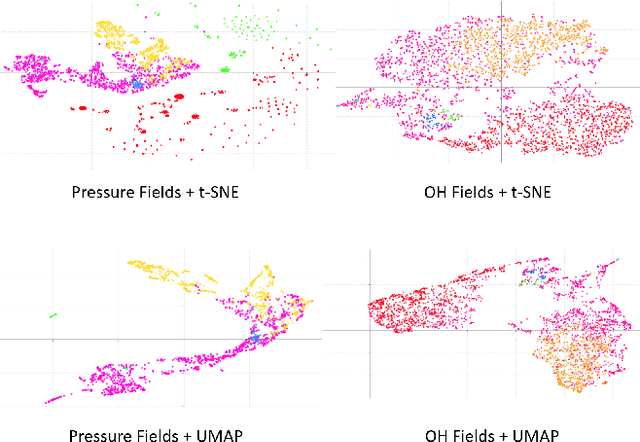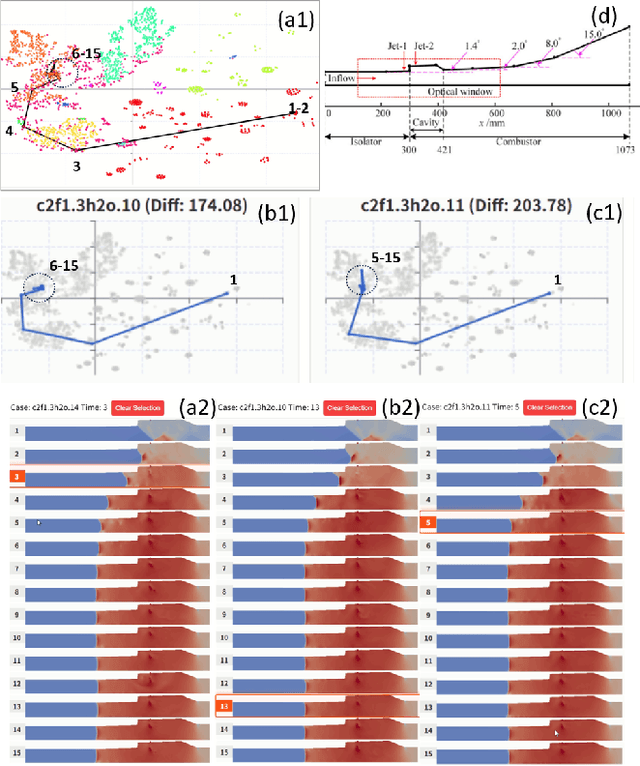Wei Yao
A DeepSeek-Powered AI System for Automated Chest Radiograph Interpretation in Clinical Practice
Dec 23, 2025Abstract:A global shortage of radiologists has been exacerbated by the significant volume of chest X-ray workloads, particularly in primary care. Although multimodal large language models show promise, existing evaluations predominantly rely on automated metrics or retrospective analyses, lacking rigorous prospective clinical validation. Janus-Pro-CXR (1B), a chest X-ray interpretation system based on DeepSeek Janus-Pro model, was developed and rigorously validated through a multicenter prospective trial (NCT07117266). Our system outperforms state-of-the-art X-ray report generation models in automated report generation, surpassing even larger-scale models including ChatGPT 4o (200B parameters), while demonstrating reliable detection of six clinically critical radiographic findings. Retrospective evaluation confirms significantly higher report accuracy than Janus-Pro and ChatGPT 4o. In prospective clinical deployment, AI assistance significantly improved report quality scores, reduced interpretation time by 18.3% (P < 0.001), and was preferred by a majority of experts in 54.3% of cases. Through lightweight architecture and domain-specific optimization, Janus-Pro-CXR improves diagnostic reliability and workflow efficiency, particularly in resource-constrained settings. The model architecture and implementation framework will be open-sourced to facilitate the clinical translation of AI-assisted radiology solutions.
Information Gain-based Policy Optimization: A Simple and Effective Approach for Multi-Turn LLM Agents
Oct 16, 2025Abstract:Large language model (LLM)-based agents are increasingly trained with reinforcement learning (RL) to enhance their ability to interact with external environments through tool use, particularly in search-based settings that require multi-turn reasoning and knowledge acquisition. However, existing approaches typically rely on outcome-based rewards that are only provided at the final answer. This reward sparsity becomes particularly problematic in multi-turn settings, where long trajectories exacerbate two critical issues: (i) advantage collapse, where all rollouts receive identical rewards and provide no useful learning signals, and (ii) lack of fine-grained credit assignment, where dependencies between turns are obscured, especially in long-horizon tasks. In this paper, we propose Information Gain-based Policy Optimization (IGPO), a simple yet effective RL framework that provides dense and intrinsic supervision for multi-turn agent training. IGPO models each interaction turn as an incremental process of acquiring information about the ground truth, and defines turn-level rewards as the marginal increase in the policy's probability of producing the correct answer. Unlike prior process-level reward approaches that depend on external reward models or costly Monte Carlo estimation, IGPO derives intrinsic rewards directly from the model's own belief updates. These intrinsic turn-level rewards are combined with outcome-level supervision to form dense reward trajectories. Extensive experiments on both in-domain and out-of-domain benchmarks demonstrate that IGPO consistently outperforms strong baselines in multi-turn scenarios, achieving higher accuracy and improved sample efficiency.
TemporalFlowViz: Parameter-Aware Visual Analytics for Interpreting Scramjet Combustion Evolution
Sep 05, 2025



Abstract:Understanding the complex combustion dynamics within scramjet engines is critical for advancing high-speed propulsion technologies. However, the large scale and high dimensionality of simulation-generated temporal flow field data present significant challenges for visual interpretation, feature differentiation, and cross-case comparison. In this paper, we present TemporalFlowViz, a parameter-aware visual analytics workflow and system designed to support expert-driven clustering, visualization, and interpretation of temporal flow fields from scramjet combustion simulations. Our approach leverages hundreds of simulated combustion cases with varying initial conditions, each producing time-sequenced flow field images. We use pretrained Vision Transformers to extract high-dimensional embeddings from these frames, apply dimensionality reduction and density-based clustering to uncover latent combustion modes, and construct temporal trajectories in the embedding space to track the evolution of each simulation over time. To bridge the gap between latent representations and expert reasoning, domain specialists annotate representative cluster centroids with descriptive labels. These annotations are used as contextual prompts for a vision-language model, which generates natural-language summaries for individual frames and full simulation cases. The system also supports parameter-based filtering, similarity-based case retrieval, and coordinated multi-view exploration to facilitate in-depth analysis. We demonstrate the effectiveness of TemporalFlowViz through two expert-informed case studies and expert feedback, showing TemporalFlowViz enhances hypothesis generation, supports interpretable pattern discovery, and enhances knowledge discovery in large-scale scramjet combustion analysis.
Multiple-Parameter Graph Fractional Fourier Transform: Theory and Applications
Jul 31, 2025Abstract:The graph fractional Fourier transform (GFRFT) applies a single global fractional order to all graph frequencies, which restricts its adaptability to diverse signal characteristics across the spectral domain. To address this limitation, in this paper, we propose two types of multiple-parameter GFRFTs (MPGFRFTs) and establish their corresponding theoretical frameworks. We design a spectral compression strategy tailored for ultra-low compression ratios, effectively preserving essential information even under extreme dimensionality reduction. To enhance flexibility, we introduce a learnable order vector scheme that enables adaptive compression and denoising, demonstrating strong performance on both graph signals and images. We explore the application of MPGFRFTs to image encryption and decryption. Experimental results validate the versatility and superior performance of the proposed MPGFRFT framework across various graph signal processing tasks.
SD-GS: Structured Deformable 3D Gaussians for Efficient Dynamic Scene Reconstruction
Jul 10, 2025Abstract:Current 4D Gaussian frameworks for dynamic scene reconstruction deliver impressive visual fidelity and rendering speed, however, the inherent trade-off between storage costs and the ability to characterize complex physical motions significantly limits the practical application of these methods. To tackle these problems, we propose SD-GS, a compact and efficient dynamic Gaussian splatting framework for complex dynamic scene reconstruction, featuring two key contributions. First, we introduce a deformable anchor grid, a hierarchical and memory-efficient scene representation where each anchor point derives multiple 3D Gaussians in its local spatiotemporal region and serves as the geometric backbone of the 3D scene. Second, to enhance modeling capability for complex motions, we present a deformation-aware densification strategy that adaptively grows anchors in under-reconstructed high-dynamic regions while reducing redundancy in static areas, achieving superior visual quality with fewer anchors. Experimental results demonstrate that, compared to state-of-the-art methods, SD-GS achieves an average of 60\% reduction in model size and an average of 100\% improvement in FPS, significantly enhancing computational efficiency while maintaining or even surpassing visual quality.
PhysiInter: Integrating Physical Mapping for High-Fidelity Human Interaction Generation
Jun 09, 2025Abstract:Driven by advancements in motion capture and generative artificial intelligence, leveraging large-scale MoCap datasets to train generative models for synthesizing diverse, realistic human motions has become a promising research direction. However, existing motion-capture techniques and generative models often neglect physical constraints, leading to artifacts such as interpenetration, sliding, and floating. These issues are exacerbated in multi-person motion generation, where complex interactions are involved. To address these limitations, we introduce physical mapping, integrated throughout the human interaction generation pipeline. Specifically, motion imitation within a physics-based simulation environment is used to project target motions into a physically valid space. The resulting motions are adjusted to adhere to real-world physics constraints while retaining their original semantic meaning. This mapping not only improves MoCap data quality but also directly informs post-processing of generated motions. Given the unique interactivity of multi-person scenarios, we propose a tailored motion representation framework. Motion Consistency (MC) and Marker-based Interaction (MI) loss functions are introduced to improve model performance. Experiments show our method achieves impressive results in generated human motion quality, with a 3%-89% improvement in physical fidelity. Project page http://yw0208.github.io/physiinter
On the Emergence of Weak-to-Strong Generalization: A Bias-Variance Perspective
May 30, 2025Abstract:Weak-to-strong generalization (W2SG) refers to the phenomenon where a strong student model, trained on a dataset labeled by a weak teacher, ultimately outperforms the teacher on the target task. Recent studies attribute this performance gain to the prediction misfit between the student and teacher models. In this work, we theoretically investigate the emergence of W2SG through a generalized bias-variance decomposition of Bregman divergence. Specifically, we show that the expected population risk gap between the student and teacher is quantified by the expected misfit between the two models. While this aligns with previous results, our analysis removes several restrictive assumptions, most notably, the convexity of the student's hypothesis class, required in earlier works. Moreover, we show that W2SG is more likely to emerge when the student model approximates its posterior mean teacher, rather than mimicking an individual teacher. Using a concrete example, we demonstrate that if the student model has significantly larger capacity than the teacher, it can indeed converge to this posterior mean. Our analysis also suggests that avoiding overfitting to the teacher's supervision and reducing the entropy of student's prediction further facilitate W2SG. In addition, we show that the reverse cross-entropy loss, unlike the standard forward cross-entropy, is less sensitive to the predictive uncertainty of the teacher. Finally, we empirically verify our theoretical insights and demonstrate that incorporating the reverse cross-entropy loss consistently improves student performance.
Efficient Curvature-Aware Hypergradient Approximation for Bilevel Optimization
May 04, 2025



Abstract:Bilevel optimization is a powerful tool for many machine learning problems, such as hyperparameter optimization and meta-learning. Estimating hypergradients (also known as implicit gradients) is crucial for developing gradient-based methods for bilevel optimization. In this work, we propose a computationally efficient technique for incorporating curvature information into the approximation of hypergradients and present a novel algorithmic framework based on the resulting enhanced hypergradient computation. We provide convergence rate guarantees for the proposed framework in both deterministic and stochastic scenarios, particularly showing improved computational complexity over popular gradient-based methods in the deterministic setting. This improvement in complexity arises from a careful exploitation of the hypergradient structure and the inexact Newton method. In addition to the theoretical speedup, numerical experiments demonstrate the significant practical performance benefits of incorporating curvature information.
A Provably Convergent Plug-and-Play Framework for Stochastic Bilevel Optimization
May 02, 2025Abstract:Bilevel optimization has recently attracted significant attention in machine learning due to its wide range of applications and advanced hierarchical optimization capabilities. In this paper, we propose a plug-and-play framework, named PnPBO, for developing and analyzing stochastic bilevel optimization methods. This framework integrates both modern unbiased and biased stochastic estimators into the single-loop bilevel optimization framework introduced in [9], with several improvements. In the implementation of PnPBO, all stochastic estimators for different variables can be independently incorporated, and an additional moving average technique is applied when using an unbiased estimator for the upper-level variable. In the theoretical analysis, we provide a unified convergence and complexity analysis for PnPBO, demonstrating that the adaptation of various stochastic estimators (including PAGE, ZeroSARAH, and mixed strategies) within the PnPBO framework achieves optimal sample complexity, comparable to that of single-level optimization. This resolves the open question of whether the optimal complexity bounds for solving bilevel optimization are identical to those for single-level optimization. Finally, we empirically validate our framework, demonstrating its effectiveness on several benchmark problems and confirming our theoretical findings.
qNBO: quasi-Newton Meets Bilevel Optimization
Feb 03, 2025Abstract:Bilevel optimization, addressing challenges in hierarchical learning tasks, has gained significant interest in machine learning. The practical implementation of the gradient descent method to bilevel optimization encounters computational hurdles, notably the computation of the exact lower-level solution and the inverse Hessian of the lower-level objective. Although these two aspects are inherently connected, existing methods typically handle them separately by solving the lower-level problem and a linear system for the inverse Hessian-vector product. In this paper, we introduce a general framework to address these computational challenges in a coordinated manner. Specifically, we leverage quasi-Newton algorithms to accelerate the resolution of the lower-level problem while efficiently approximating the inverse Hessian-vector product. Furthermore, by exploiting the superlinear convergence properties of BFGS, we establish the non-asymptotic convergence analysis of the BFGS adaptation within our framework. Numerical experiments demonstrate the comparable or superior performance of the proposed algorithms in real-world learning tasks, including hyperparameter optimization, data hyper-cleaning, and few-shot meta-learning.
 Add to Chrome
Add to Chrome Add to Firefox
Add to Firefox Add to Edge
Add to Edge